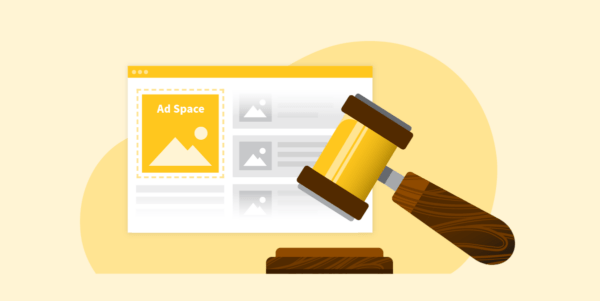Real-Time Bidding (RTB) is revolutionizing digital marketing, offering unparalleled advantages that traditional ad buying methods simply can’t match. But what exactly is RTB, and how does it give marketers that crucial edge?

Understanding Real-Time Bidding
RTB is a programmatic advertising technique that enables marketers to buy and sell ad impressions in real-time through automated auctions. Unlike the old-fashioned method of purchasing bulk ad space in advance, RTB allows for more precise targeting and efficient budget use. Here’s a closer look at how it works and why it’s so impactful.
How RTB Works

Imagine a user visits a website. Instantly, an auction takes place among advertisers to serve an ad to this user. The entire process—from the user landing on the page to the ad being displayed—happens in milliseconds. This rapid auction process is powered by sophisticated algorithms that assess the value of the impression based on the user’s profile and the context of the webpage.
The Mechanics Behind RTB
- Ad Exchange – The marketplace where the auction happens, connecting publishers selling ad space with advertisers.
- Demand-Side Platforms (DSPs) – These platforms represent advertisers, placing bids on impressions based on predefined criteria.
- Supply-Side Platforms (SSPs) – These platforms help publishers manage and sell their ad inventory.
Benefits of RTB for Digital Marketers
The advantages of RTB are vast, fundamentally transforming how advertisers approach digital marketing.
Precision Targeting
RTB allows advertisers to target specific audiences with remarkable accuracy. By leveraging data on user behaviour, demographics, and interests, marketers can ensure their ads are seen by the right people at the right time.
- Behavioral targeting – Ads based on user’s previous actions, ensuring relevance.
- Contextual targeting – Ads matched to the content of the page, increasing engagement.
Cost Efficiency
Traditional ad buying often involves a significant waste of budget on uninterested viewers. RTB minimizes this waste by allowing bids on individual impressions, meaning advertisers only pay for the exact audience they want to reach.
- Reduced ad spend – Pay only for impressions that meet your criteria.
- Higher ROI – More effective targeting leads to better conversion rates.
Real-Time Analytics and Optimization
One of the standout features of RTB is the ability to monitor campaign performance in real-time. This continuous feedback loop allows for immediate adjustments, ensuring optimal results throughout the campaign.
- Dynamic optimization – Adjust bids and targeting parameters on the fly.
- Performance tracking – Access to detailed analytics to refine strategies.
Implementing RTB: Key Strategies
To leverage RTB effectively, marketers need to adopt certain strategies and best practices.
Data-Driven Decisions
The success of RTB campaigns hinges on the quality of data used for targeting. Investing in robust data management platforms (DMPs) can provide the necessary insights to fine-tune targeting parameters and enhance ad relevance.
Creative Flexibility
RTB allows for dynamic creative optimization (DCO), which means ads can be tailored in real-time based on user data. This flexibility ensures that the ad content resonates with each individual viewer, boosting engagement rates.
- Personalized ads – Custom messages for different audience segments.
- Adaptive content – Modify visuals and copy to align with user preferences.
Cross-Device Targeting
Today’s consumers use multiple devices throughout their day. RTB enables seamless cross-device targeting, ensuring consistent messaging across smartphones, tablets, and desktops.
- Unified user experience – Maintain brand consistency across all touchpoints.
- Enhanced tracking – Follow user journeys across devices for better attribution.
Overcoming Challenges in RTB
While RTB offers numerous benefits, it’s not without its challenges. Understanding and addressing these issues is crucial for maximizing the potential of RTB.
Ad Fraud
Ad fraud, such as fake impressions and click fraud, can undermine the effectiveness of RTB campaigns. Implementing advanced fraud detection tools and partnering with reputable vendors can mitigate these risks.
- Verification services – Ensure your ads are being seen by real users.
- Transparent reporting – Access to detailed logs to identify and address fraud.
Privacy Concerns
With increasing scrutiny on data privacy, marketers must ensure compliance with regulations such as GDPR and CCPA. This involves obtaining proper user consent and managing data responsibly.
- Compliance tools – Use platforms that adhere to privacy laws.
- User trust – Transparent data practices build consumer confidence.
Future of RTB in Digital Marketing

The landscape of digital marketing is constantly evolving, and RTB is at the forefront of this change. As technology advances, we can expect RTB to become even more sophisticated and integrated into broader marketing strategies.
Integration with AI and Machine Learning
Artificial intelligence (AI) and machine learning are set to enhance RTB capabilities further. These technologies can analyze vast amounts of data at lightning speed, making real-time bidding even more precise and effective.
- Predictive analytics – Forecasting user behavior to optimize bids.
- Automated adjustments – Continuous improvement of targeting criteria.
Enhanced Personalization
As consumer expectations for personalized experiences grow, RTB will play a pivotal role in delivering tailored content. Future developments may include more nuanced targeting capabilities and richer data sources.
- Hyper-personalization – Ads that speak directly to individual needs.
- Advanced segmentation – Deeper insights into audience characteristics.
Conclusion: Embrace the Future with RTB
Real-Time Bidding is more than just a trend; it’s a powerful tool that offers a competitive edge in digital marketing. By harnessing the precision, efficiency, and adaptability of RTB, marketers can not only reach their target audiences more effectively but also achieve higher returns on their advertising investments.
